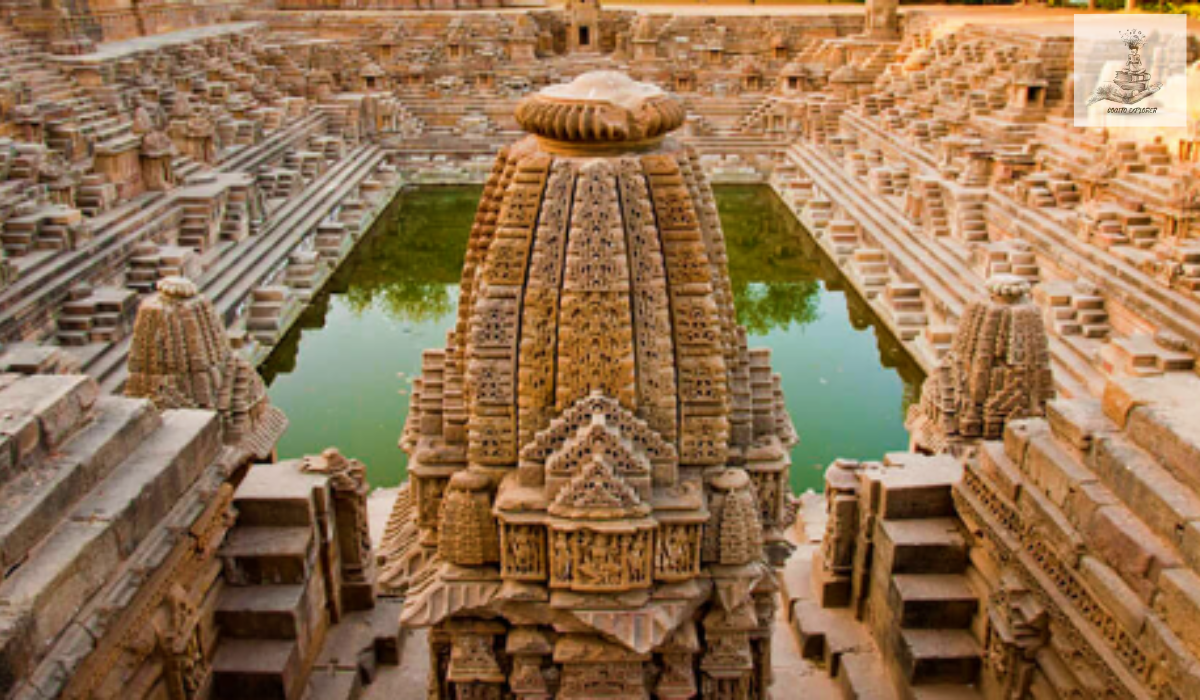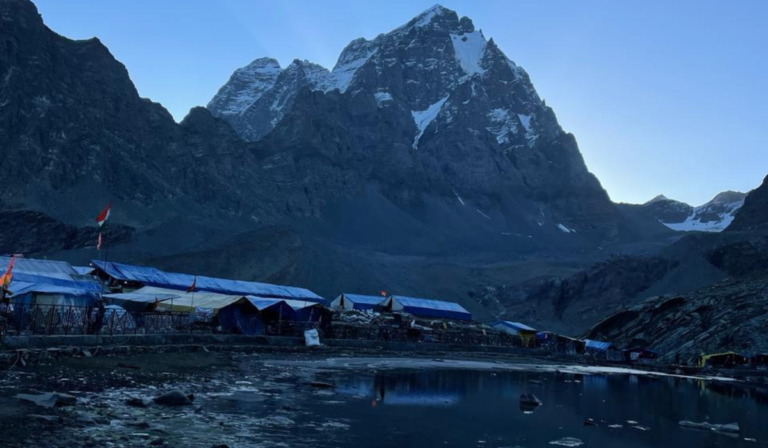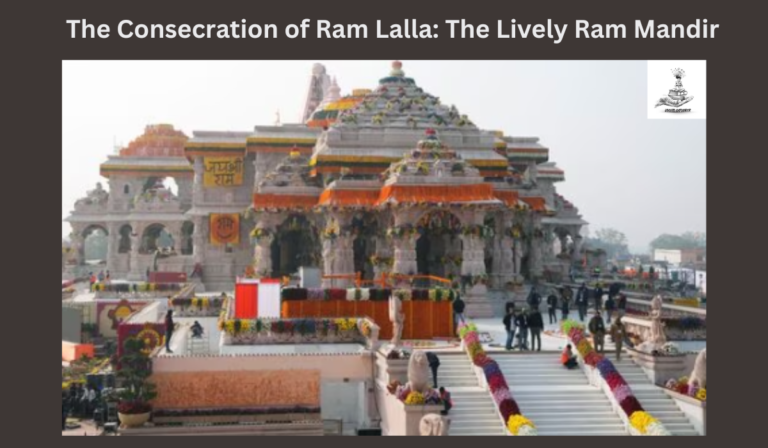Sun Temple Modhera: History, Location, & Timing
The Sun Temple of Modhera in Gujarat, India, honors the solar deity Surya and was built during the reign of Bhima I of the Chaulukya dynasty, around 1026-1027 CE. It is believed that its construction may have been inspired by an invasion by Mahmud of Ghazni in 1024-1025, where the kingdom defended itself successfully. The temple bears an inscription dating back to Vikram Samvat 1083 (1026-1027 CE), although it appears upside down, indicating destruction and reconstruction. From Mahmud of Ghazni to Alauddin Khilji, each conqueror placed their stamp on the temple, demonstrating its timeless attraction and significance. Despite the loss of its beloved idols and valuables, the Modhera Sun Temple continues to stand strong as a light of hope and spirituality.

Sits by the Pushpavati River, it is now a protected monument managed by the Archaeological Survey of India. It consists of three parts: the shrine hall (Gūḍhamanḍapa), assembly hall (Sabhamanḍapa), and reservoir (Kunḍa). The complex features beautifully carved exteriors, pillars, and a stepped reservoir with small shrines.
The Kunda, along with its corner shrines, was constructed earlier in the 11th century. The main temple structure, along with the miniature shrines and niche shrines within the tank, are believed to have been constructed shortly after the year 1026 CE. The dancing hall, along with gateways, the temple porch, and doorframes, was added much later in the third quarter of the 12th century, during a subsequent reign.. Despite various historical events, the Modhera Sun Temple stands as a testament to ancient architectural and religious significance in Gujarat, India.
The Nagara (Chalukya style) Temple Architecture:
The temple complex is constructed in the Māru-Gurjara style, also known as the Chaulukya style. It comprises three main components aligned along an axis: the shrine proper (garbhagriha) within a hall (gudhamandapa), an outer assembly hall (sabhamandapa or rangamandapa), and a sacred reservoir (kinda).
The Sabhamandapa is distinct from the Gudhamandapa, situated slightly apart as a separate structure. Both are elevated on a paved platform, with their roofs having collapsed long ago, leaving only a few lower courses intact. Despite both roofs being 15′ 9″ in diameter, they exhibit different construction techniques.
The Gudhamandapa, roughly divided into the hall and the major shrine space, is 51 feet 9 inches by 25 feet 8 inches. It is rectangular in plan with projections on each smaller side and two on each longer side. The smaller side projections serve as the entrance and the rear of the shrine. The outer wall of the Gudhamandapa features windows on each side of the three projections, although some are in ruins or missing. The passage between the walls of the Garbhgriha and the outer walls of the Gudhamandapa forms the Pradakshinamarga, featuring stone slabs carved with rosettes. Unfortunately, the Shikhara (roof) no longer exists.
The Garbhagriha, or sanctum sanctorum, is square-shaped, measuring 11 feet from the inside. It contains two cells, with the upper cell’s floor having collapsed, likely once housing a deity’s image. The lower cell might have been used for storage.
While the walls inside the shrine are plain, the outer wall is adorned with decorations. The entrance displays carved figures of seated Surya within panels, surrounded by dancers and romantic couples. Unfortunately, most figures are mutilated, and the images on the door-lintel are completely destroyed.
The base and walls of the shrine and hall feature unique carvings, each with its own distinct characteristics.
At the base, there are several elements:
- The Pitha or adhisthana, which is the base, consists of two square members called Bhat followed by a carving known as cyma recta, with the lower part convex and the upper part concave.
- Next comes the padma or padmaka, which resembles an inverted lotus.
- Following that is the antarita, a fillet or astragal with a sharp edge between two recesses.
- Above this is the patta, which has a thin molding called chhaja at its lower edge.
- Then there is another chhaja, separated by the neck, known as alinga.
- The next broad band is the gajathara, carved with elephants.
- Finally, the narathara band features figures of men in various poses.
Moving on to the wall moldings, called Mandovara:
- It starts with the kumbha, a pitcher, adorned with oval discs in the middle part.
- This is followed by the kalasha, another pitcher.
- Then there’s kevala, a wide band with chaitya-windows, followed by manchi, another comparable band separated by a deep band.
- Above these is a thin fillet, and then the major paneled face of the wall called jangha, decorated with figures of gods, particularly Surya who is prominently featured due to the temple’s dedication to him. Other panels depict dancers.
Location Modhera Sun Temple:
For travelers seeking to experience the splendor of the Modhera Sun Temple, access is readily available.
- The nearest airport is Ahmedabad, approximately 100 kilometers away from the temple.
- Mehsana serves as the closest railhead, just 30 kilometers from the temple.
- Regular buses ply between Mehsana and Ahmedabad, offering convenient transportation options for visitors.
Modhera Sun Temple Timing:
Visiting hours extend from 7:00 AM to 6:00 PM, allowing ample time to explore this architectural masterpiece and soak in its spiritual ambiance. Additionally, evening illumination from 6:00 PM to 9:00 PM offers a mesmerizing spectacle for those seeking to witness the temple’s ethereal beauty under the night sky.
Modhera Sun Temple entry fees:
Entrance to the temple is affordably priced, with tickets priced at INR 25 for Indian, SAARC, and BIMSTEC citizens, and INR 300 for other foreigners. Children below 15 years of age enjoy free entry, ensuring that visitors of all ages can partake in this transcendent experience.
Also Read: Exploring the Original Ram Mandir in Ayodhya
Conclusion:
The Modhera Sun Temple stands as a testament to India’s rich cultural tapestry and unwavering devotion. Its timeless allure and architectural splendor continue to captivate the hearts and minds of all who journey to its sacred grounds, offering a glimpse into the spiritual legacy of generations past.
FAQ’s About Modhera Sun Temple:
What is special about Modhera Sun Temple?
The Modhera Sun Temple holds immense significance due to its rich architectural heritage and spiritual devotion. Built around 1026-27 CE, it is dedicated to the solar deity Surya and showcases stunning Māru-Gurjara architecture. The temple’s intricate carvings, sacred reservoir, and historical significance make it a unique and revered pilgrimage site in Gujarat, India.
Who destroyed Sun Temple Modhera?
The Sun Temple of Modhera faced destruction at the hands of invaders throughout history. Mahmud of Ghazni is documented to have attacked the temple around 1025 CE, and Alauddin Khilji also plundered it at a later date. These invasions resulted in the loss of treasures and the desecration of the temple’s sacred idols and artifacts.
What is the entry fee for Modhera Sun Temple?
The entry fee for visiting the Modhera Sun Temple is INR 25 for Indian, SAARC, and BIMSTEC citizens. For other foreigners, the entry fee is INR 300. Children below 15 years of age enjoy free entry to the temple premises.
Why there is no idol in Modhera Sun Temple?
The absence of the main idol in the Modhera Sun Temple is attributed to the temple’s tumultuous history of invasions and plundering. Local legends suggest that the original idol of Surya Devta, adorned with gold and precious gems, was looted during attacks by Mahmud of Ghazni and subsequent invaders. Despite efforts to safeguard the idols, their whereabouts remain unknown today.
Why is it called Modhera Sun Temple?
The name “Modhera” is believed to have originated from ancient texts and local legends associated with the temple’s history. According to one account, during King Rama’s return from vanquishing Ravana, he performed a yagna at the site to absolve himself of the sin of killing a Brahman. Sage Vasishta assisted in this ritual, and a priest from the Modh community aided in its execution. Over time, the village of Modhera evolved around this sacred site, eventually giving rise to the renowned Modhera Sun Temple.







